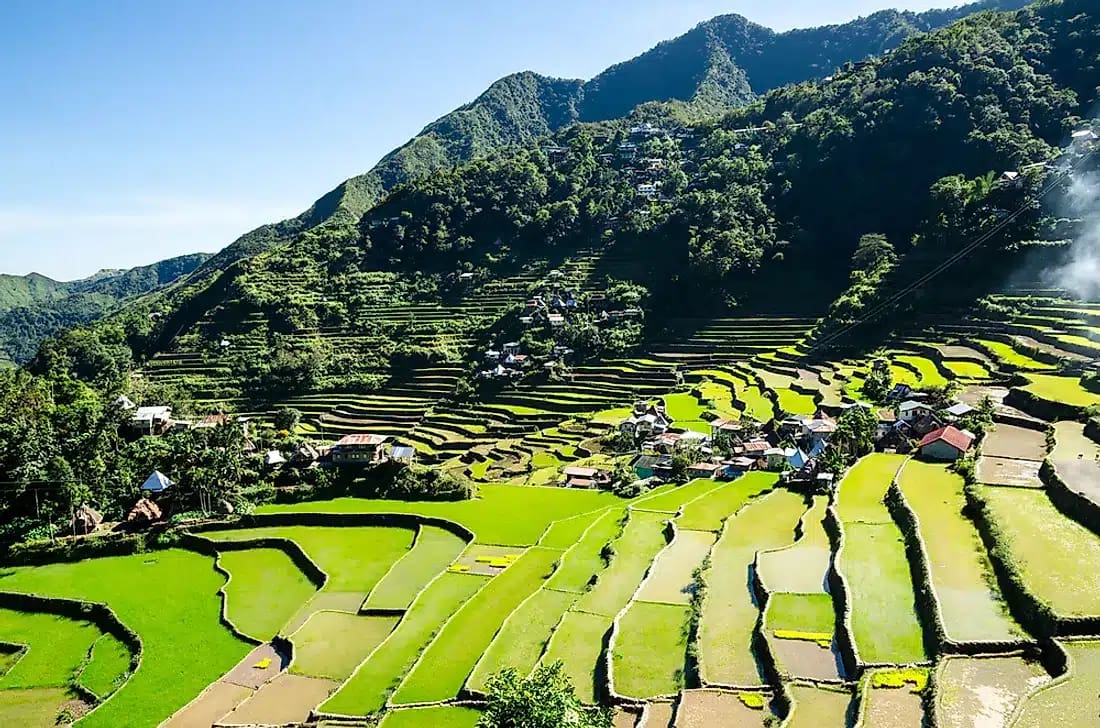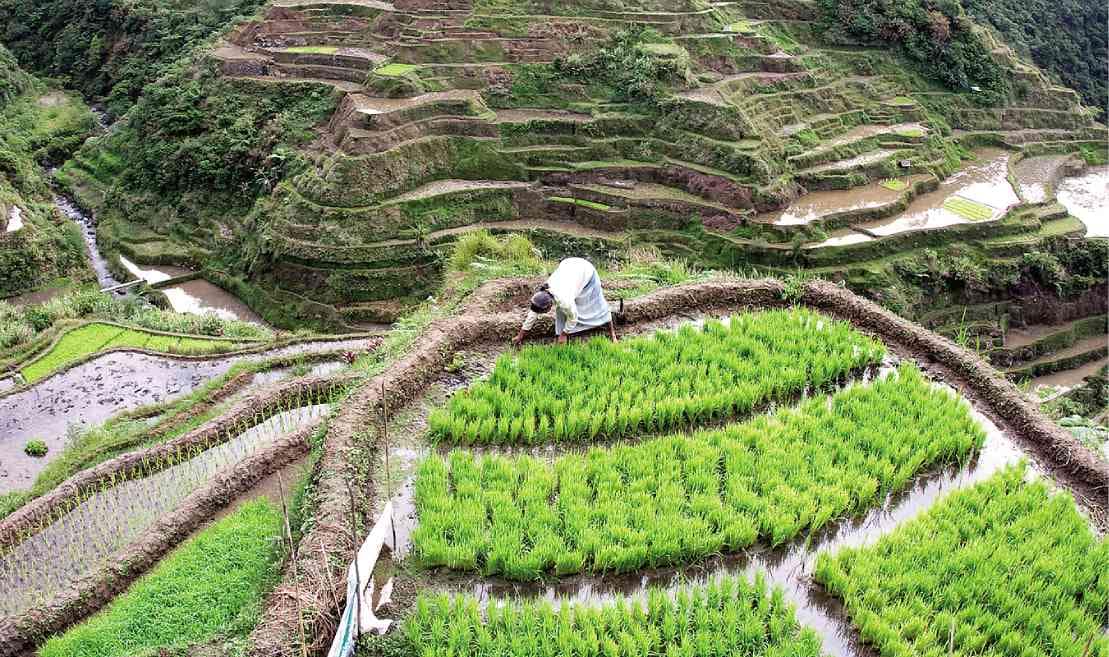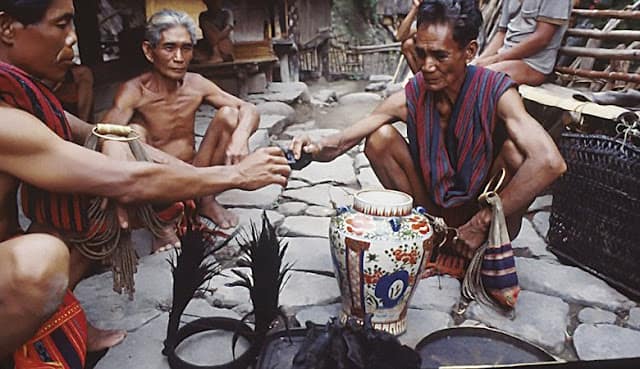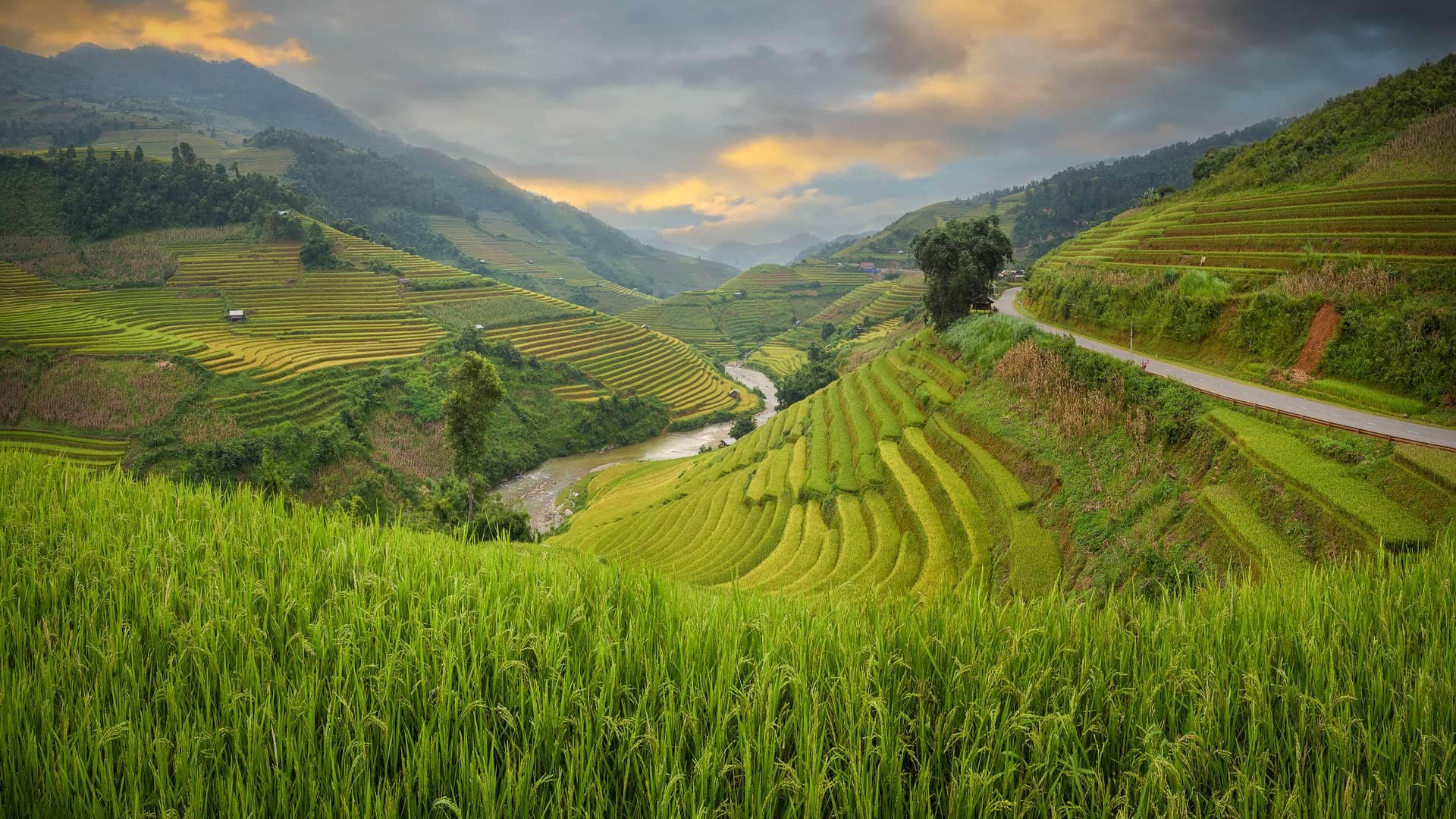The Banaue Rice Terraces: A Living Legacy in Luzon, Philippines
Nestled in the heart of the Cordillera Mountains in Northern Luzon, the Banaue Rice Terraces stand as one of the most iconic landmarks of the Philippines. Often referred to as the “Eighth Wonder of the World,” these terraces have been hand-carved from the mountains by the Ifugao people for over 2,000 years. An intricate tapestry of agriculture, history, and culture, the Banaue Rice Terraces are more than just picturesque landscapes; they’re a testament to human ingenuity and resilience.
Historical Significance
The origins of the terraces trace back to the Ifugao tribes, who began the construction to create a sustainable method for rice cultivation in the region. The terraces are believed to be older than the famous Inca ruins of Machu Picchu. With minimal tools and resources, these early Filipinos managed to create an engineering marvel that has withstood both time and nature.
Engineering Marvel
Constructed using primitive tools and a method known as “stone and mud walling”, the Banaue Rice Terraces are a marvel in sustainable agricultural engineering. The terraces follow the natural contours of the mountains, ensuring efficient irrigation from the rainforests above and providing an optimal environment for rice cultivation.
The irrigation system is particularly noteworthy. It channels water from the rainforest into the terraces, ensuring that even during the driest months, the paddies remain adequately watered. This feat of hydroengineering is a testament to the ingenuity and knowledge of the Ifugao people.
Cultural Significance
The Banaue Rice Terraces are not just a source of food; they’re deeply embedded in the culture and identity of the Ifugao people. They hold spiritual significance, with the land believed to be inhabited by deities and ancestral spirits. Rituals, festivals, and dances are still practiced, celebrating the harmonious relationship between the people, their ancestors, and the land.
Threats and Conservation
Despite their grandeur, the Banaue Rice Terraces face numerous challenges. Erosion, deforestation, and climate change are posing threats to their structural integrity and productivity. Modernization has also led many of the younger generation to migrate to urban areas, leaving fewer hands to maintain and farm the terraces.
Recognizing their importance, the Philippine government and various organizations are actively working to conserve and rehabilitate the terraces. In 1995, the Banaue Rice Terraces were added to the list of UNESCO World Heritage Sites in danger, emphasizing the need for immediate and sustained conservation efforts.
Conclusion
The Banaue Rice Terraces are more than just beautiful landscapes. They are living proof of human adaptability, creativity, and a deep-rooted connection to nature. As one of the Philippines’ most prized treasures, it is crucial for both locals and the global community to work together to ensure that they continue to stand tall, feeding souls and bodies for generations to come.
Getting to the Banaue Rice Terraces
Traveling to the Banaue Rice Terraces can be an adventure in itself, offering travelers a chance to experience the diverse landscapes and vibrant cultures of the Philippines. Here’s a step-by-step guide on how to get to this world-renowned site:
1. From Manila:
Manila, the capital of the Philippines, is the primary gateway for international travelers. From Manila, you have several options to reach Banaue.
-
By Bus:
- Several bus companies offer direct routes from Manila to Banaue. The journey typically takes around 9-10 hours.
- Some recommended bus companies include Ohayami Trans and Coda Lines. It’s advisable to book your tickets in advance, especially during peak seasons.
- Buses usually depart in the evening, offering overnight journeys that allow you to arrive in Banaue by morning.
-
By Private Car:
- If you prefer a more flexible schedule and the freedom to stop along the way, renting a car is an option. However, be prepared for winding mountain roads and ensure that you’re comfortable with driving in such conditions.
- Take the North Luzon Expressway (NLEX), then the Subic-Clark-Tarlac Expressway (SCTEX) followed by the Tarlac-Pangasinan-La Union Expressway (TPLEX). From there, head towards Nueva Vizcaya, reaching Banaue via the Ifugao State.
-
By Plane and Road:
- While there’s no direct airport in Banaue, the closest one is Tuguegarao Airport in Cagayan Valley.
- From Tuguegarao, you can take a van or bus to Banaue. The journey might take around 5 hours.
2. From Other Parts of Luzon:
If you’re traveling from other parts of Luzon, the best route would still be via Manila, since direct connections to Banaue might be limited.
3. Exploring Banaue:
Once in Banaue, there are various ways to explore the rice terraces and nearby attractions.
-
By Tricycle or Jeepney:
- These are popular modes of transport in the Philippines. You can hire tricycles or join locals in shared jeepneys to visit different viewpoints of the terraces.
-
On Foot:
- Trekking is a wonderful way to truly experience the beauty of the terraces and the surrounding villages. There are numerous trekking routes, ranging from short walks to multi-day hikes.
-
Guided Tours:
- To get a deeper understanding of the history, culture, and intricacies of the terraces, consider hiring a local guide. They can provide insights, share stories, and ensure you have a memorable experience.
4. Additional Tips:
- Always check the local weather and road conditions before your journey.
- Consider traveling during the off-peak season to avoid large crowds.
- Respect local customs and traditions, especially when visiting villages.
With its stunning landscapes and rich heritage, the journey to the Banaue Rice Terraces is truly worth every effort. Whether by bus, car, or on foot, the experience promises to be unforgettable.
Another unforgettable experience is the boat tours we organize in Palawan, the jewel of the Philippines. If you ever make it down there, we’d be glad to give you some suggestions.
Experience the thrill of island hopping in the Philippines
FAQs
What is special about Banaue Rice Terraces?
The Banaue Rice Terraces are a breathtaking masterpiece of ancient engineering, hand-carved into the mountains of Ifugao over 2,000 years ago. Often referred to as the “Eighth Wonder of the World,” they showcase the harmony between humans and nature, cascading in endless steps of verdant green that defy the rugged mountain terrain.
Why did the Ifugao build the rice terraces?
The ingenious Ifugao people built the rice terraces as a solution to the challenge of cultivating food on the mountainous landscapes of Luzon. By carving these terraces, they were able to harness water from mountaintop forests, creating a sustainable and efficient irrigation system for rice cultivation that has lasted for millennia.
What is the first rice terraces in the world?
While the exact origins of terraced rice cultivation are debated, the oldest known rice terraces are believed to be in China, predating those in the Philippines. However, the Banaue Rice Terraces are unique in their extensive scale, beauty, and preservation by the Ifugao community.
Why is Banaue a good place to visit?
Banaue is more than just terraces! It’s a journey into a vibrant culture, a glimpse into age-old traditions, and an adventure through nature’s wonders. From its misty mornings to the echoing sounds of traditional gongs, Banaue offers a serene escape, rich history, and the warmth of Ifugao hospitality.
What is the most famous rice terraces?
While there are many stunning rice terraces globally, the Banaue Rice Terraces are among the most iconic and celebrated. Their grandeur, age, and the fascinating culture of the Ifugao people make them a standout attraction in the world of terraced landscapes.
What would be best for a day trip in Banaue Rice Terraces?
For a day trip, start with a sunrise view at the main viewpoint, capturing the terraces bathed in golden light. Engage with local guides for a trek through the terraces, stopping by the Tam-an Village to understand Ifugao culture. Don’t forget to savor the local delicacies, especially the mountain rice and coffee. Finish with a visit to the Banaue Museum to dive deeper into the region’s history.
Is Banaue Rice Terraces worth visiting?
Absolutely! The Banaue Rice Terraces are a testament to human ingenuity and a living legacy of the Ifugao community. The panoramic views, cultural immersion, and the chance to walk on terraces that have been cultivated for over two millennia make it a must-visit for every traveler. It’s a place where history, culture, and nature beautifully converge.
Booking - Private Tours
We are a family operation and would love to show you around our beautiful country. We primarily focus on private tours catering to clients interested in a custom and unique experience. Otherwise we offer lots of free information on these pages for budget travelers. Feel free to contact us so we can design the perfect package for you!
Home » Luzon » Explore »

Good recommandation for the overnight stay.
The crew was very helpful
and they prepared very nice meals for us.
Strongly recommended
I wanted to surprise my girlfriend with a special engagement in beautiful El Nido!!
Melasel arranged everything for me and had so many great suggestions and knowledge of how to make this a magical day! I was super worried because it is difficult to arrange such an important event when you live on the other side of the world! But Mel was amazing and understood exactly what I wanted! And went out of her way to accommodate all my requests!
She even had a clever story to tell my girlfriend to cover the photographer being with us all day!
On the day the weather was very rainy with many showers. Mel and Rene were in constant contact with me with plan B and even contacted our hotel to discuss options of hosting the proposal there. Completely above and beyond what I paid for.
Luckily in the end the weather gave us a small window and Mel set everything up beautifully on a sand bar floating in the middle of crystal clear waters surrounded by limestone islands with stunning rocky formations.
Island Hopping in the Philippines somehow peered into my brain and delivered a perfect replica of the proposal I had in my head.
It was simply perfect down to the smallest detail! Thank you so much, I cannot recommend you guys enough!!
As most of people usually feel, once your money has been transferred out to someone you do not know, you probably frustrated that your money would not be able to be refunded.
But not in my experience. I dont need to be worry, the owner refunded me the money he has received (minus the bank fees). He promised to refund me and he did it. It was around 18.700 Pesos.
So, eventhough i didn't manage to go with the tour, but i am really satisfied with their legitimate and great business practice. Hopefully, people will try their services and not worry about their legit business!
Thanks a lot!
First of all the booking part was really simple. I organized this trip to the Philippines last minute for my family (my parents and my uncles) but Karel answered all my questions very quickly and really made everything easier for me. It was an incredible experience. Albert, our tour leader, is a wonderful guy, always smiling and ready to help us. They assisted us in everything and really took care of making everything go smoothly. The accommodation on the islands is as spartan as you expect but the location of each hut alone is worth the trip. The wonder of nature was then added to the goodness of cuisine. It's really difficult to argue how you can cook all that goodness on a boat.
If you are looking for an authentic experience, in contact with nature, off the beaten track, this company's private expedition is certainly for you.
Super ultimate tour is the best with Kayangan and barracuda lake, twin lagoons (my favorite), coral garden (blue fabulous coral) were the best. It’s really worth it to pay for private tour (3500 to 4000 PHP). You will also have to pay for entrance fees (150 to 200PHP by location) and eventually shopping at the market - must do (count 300 for 2 for fish, pork, fruits and vegetables, water).
Based on the comments, I contacted Mel.
Very responsive, very efficient and perfect organization.
The on-board staff were very friendly and very helpful.
And I'm not even talking about the meal on board...a marvel.
In all fairness, this excursion will remain an excellent memory and I cannot recommend Mel and his team highly enough.
A big thank-you.
If you love camping this is definitely a tout you should do, it has been the highlight of our trip!!
We are a family operation managing private custom boat tours in the beautiful Palawan area, and are happy to help travelers with their plans through the country, having traveled a lot of it ourselves and planning to visit it all.
Submit your review | |
I think this place is spectacular. Don't take a guide, just stay with locals in Batad (I stayed with Christina Inn right in the middle of the rice fields). The place is a true wonder. If you want to trek you can do 3 days trekking but for that you may need a guide.


















